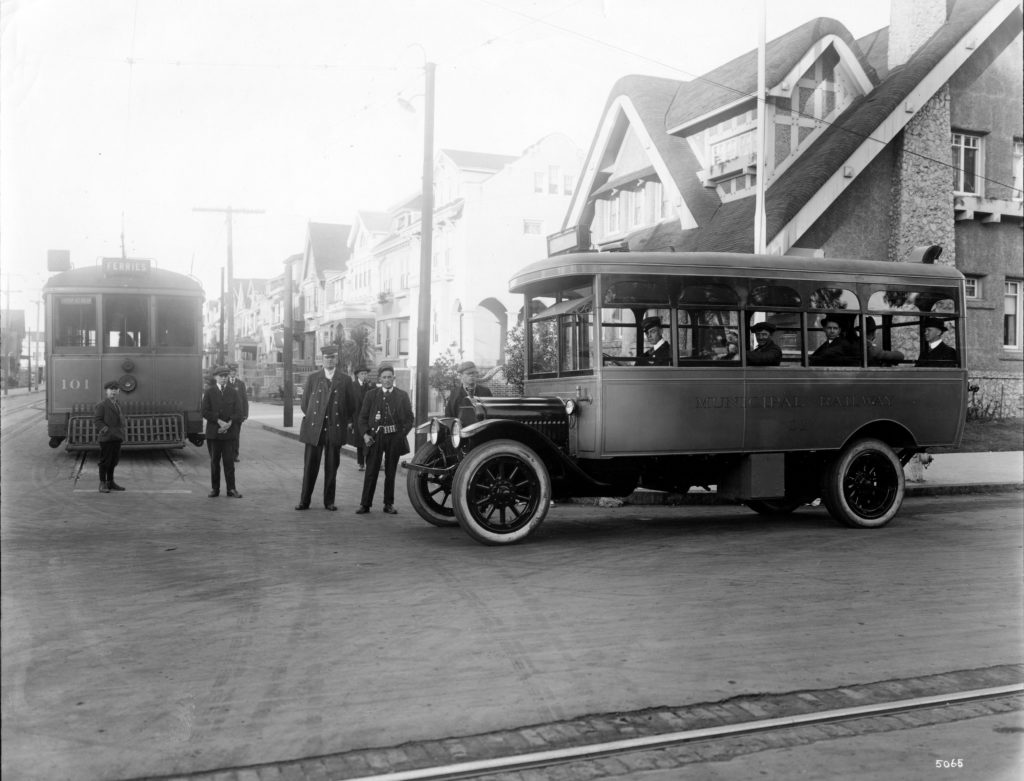
See gallery at end of story
The Covid-19 pandemic caused Muni to convert all its rail lines to buses in 2020, with rail service fitfully resuming, in stages, in 2021. Quite a reversal for the transit agency born as the San Francisco Municipal Railway, whose service was dominated by streetcars for the first 35 years of its existence, and had never before been strictly a bus operation for longer than a weekend at a time. Here’s a story we put together in 2017 to celebrate the centennial of Muni’s first bus operation.
In September 1917 the Municipal Railway left the tracks for the first time, by running its first bus—a leased vehicle whose make and model is lost to history. Still, it was the beginning of a protracted turning point for Muni.
The city’s first buses
When San Francisco got its first transit motor bus, 50,000 streetcars across the US were unquestionably kings of urban American streets. Many of those streets were paved with rough cobblestones or Belgian block when they were paved at all. Cobbles were fine for horses, but rough on any wheeled vehicle, often leading drivers of the primitive automobiles and trucks of the day to try to share the smooth streetcar track area.
Muni’s first buses were small—just 19 seats—reflecting the technology limitations of the day. They were bought to complement streetcars, not compete with them. The first Muni bus route crossed Golden Gate Park from the end of the A-Geary line into the Sunset District. Muni’s guiding spirit, legendary City Engineer M.M. O’Shaughnessy, wanted to extend the streetcar tracks through the park, but was handed a rare defeat at the hands of another legend of city government, Parks chief John McLaren.
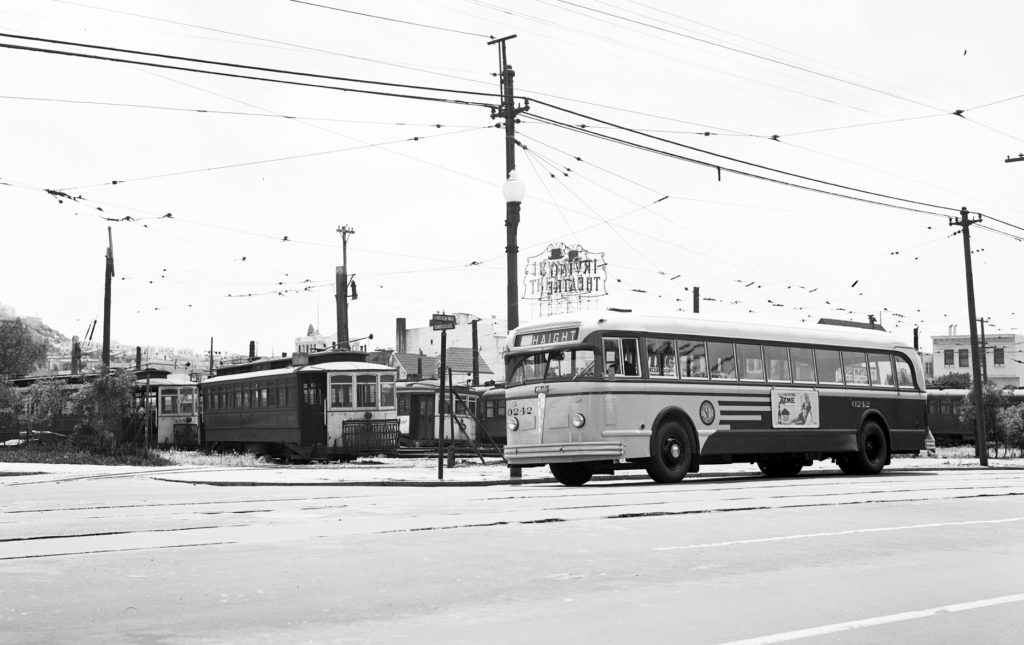
Other early Muni bus routes ran out Taraval Street from the Twin Peaks Tunnel, until the L-line was built, and along Great Highway. They didn’t go anywhere near downtown; their job was to take San Franciscans to the streetcars that did.
Buses provide a cheaper alternative
By the mid-1920s, larger engines and better suspensions made buses practical on more city streets. Still, the bus was an afterthought. Muni’s private competitor, Market Street Railway Co., which bought its first three buses in 1926, used them to connect developing neighborhoods to its main streetcar lines, starting with the 14-Mission.
A bus could be operated by a single driver, while San Francisco’s streetcars required two, a motorman and conductor. In the mid-1930s, Market Street Railway tried to convert some of its streetcar lines to use streetcars with just one crewmember, but a court overturned the move, which had been strongly opposed by labor unions. In response, Market Street Railway began converting some of its unprofitable, less patronized streetcar lines to buses. By 1941, the 19-Polk, the Third Street lines and three South of Market lines had been ‘bustituted,’ along with the Castro cable line, and in 1942, the Sacramento-Clay cable car line as well.
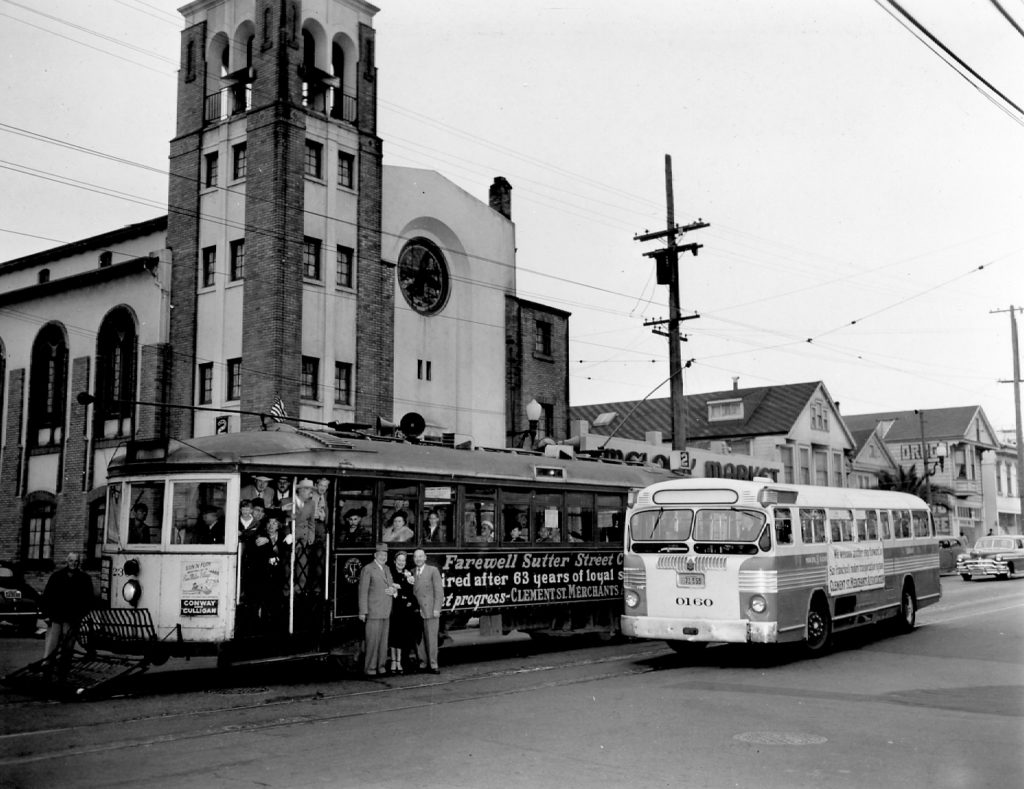
As a public agency, Muni faced less pressure to replace streetcars with buses at this time, and by the end of 1937, twenty years after running its first bus, Muni still only owned nineteen of them. That more than doubled by the end of 1941, with 43 motor buses running on eleven routes, almost all still serving as feeders for the streetcars.
Tires and wires: Early trolley buses
By the mid-1930s, motor buses could go anywhere in San Francisco there were streets—if they weren’t too steep). But electric trolley buses could climb virtually any hill; could use the same power generated for streetcars, and didn’t need tracks in the street. Market Street Railway converted its 33-Ashbury line through the Mission and over Twin Peaks into the Haight-Ashbury to trolley buses in 1935, followed by Muni with its first line, the R-Howard-South Van Ness in 1941. Muni planned to convert the E-Union streetcar line to trolley buses as well, but World War II intervened.
Wearing out
World War II tested American mass transit to the limit. Streetcars and buses all over the country were packed with riders who couldn’t use their automobiles because of gasoline and rubber rationing. Almost no new transit vehicles were built because their makers were building war vehicles. By war’s end, most streetcars and their tracks were worn out. With peace restored, families bought automobiles as never before, forsaking transit. Many privately owned streetcar companies around the country were scooped up by a partnership of bus, tire, and fuel companies and converted to buses.
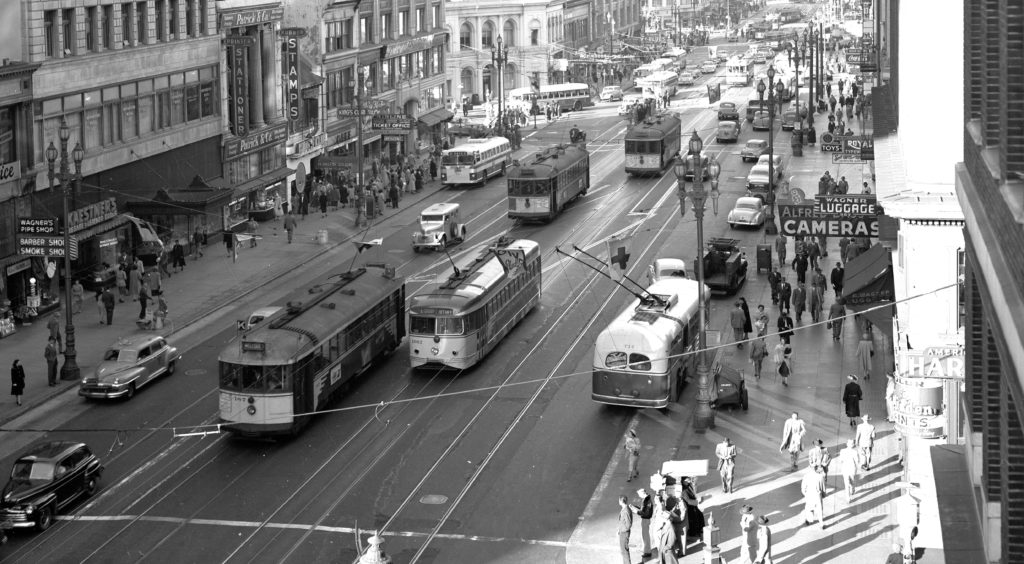
In San Francisco, the transition from streetcars to buses played out differently. The city itself bought out the private Market Street Railway Co. in 1944 and combined it with Muni. Soon after, a city consultant prepared a post-war plan that would have retained strong streetcar lines such as the K, L, M, and N, and lines on Mission, Geary, Stockton, Sutter, and Haight streets.
But with fare revenue rapidly plummeting along with ridership, labor costs became an overriding issue. Single-operator buses began substituting for two-person streetcars on some lines evenings and weekends. A 1947 plan, tied to a bond issue, emphasized single-operator trolley buses instead. It passed and changed the face of the city.
The big switch
The end of the 1940s saw buses pass up streetcars as the main public transit vehicles in San Francisco. In mid-1946, Muni owned 600 streetcars and just 225 buses. By early 1952, buses numbered more than 800 (about equally split between motor and trolley buses), while active streetcars were down to about 200. Two dozen streetcar lines had been converted to bus operation. The rising cost of two-person streetcar crews, increased automobile traffic competing for street space, and worn out streetcar infrastructure all contributed to this changeover.
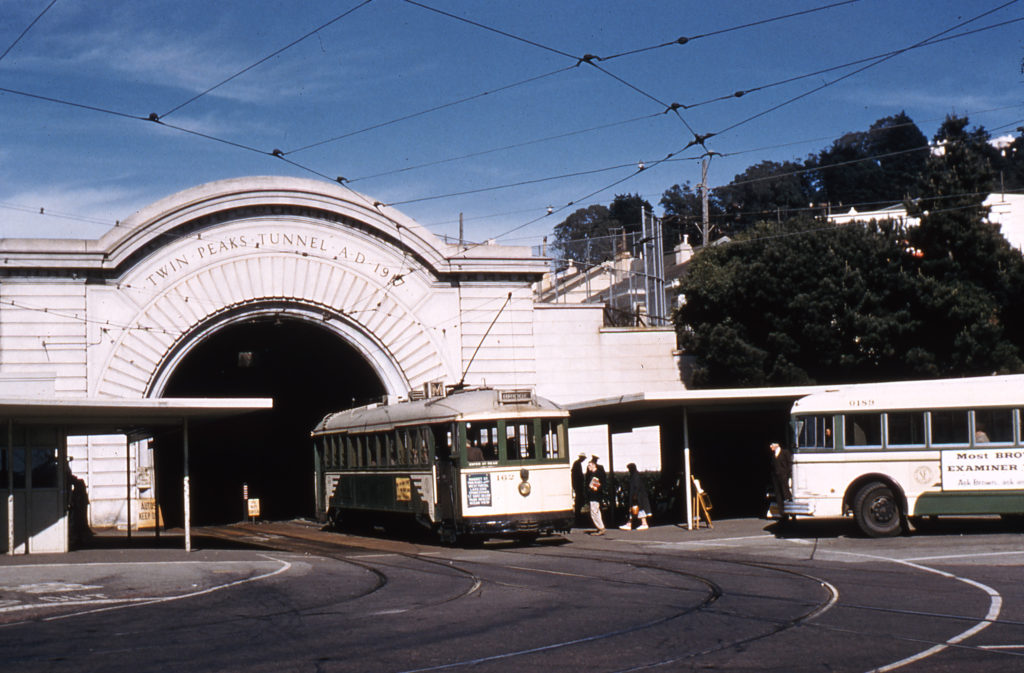
A fleet of White motor coaches, gasoline powered and very smelly to ride, provided bridge service during the conversion from streetcars to electric trolley coaches. The new trolley coach fleet was mostly Marmon-Harrington buses in three different sizes, augmented by sleek-looking Twin Coaches and hulking, hard-to-drive St. Louis Car Company buses.
By 1951, only 19% of Muni’s streetcar service was covering its operating costs, compared to more than a third of the bus service—especially distressing because buses were stuck with all the lowest ridership routes. Muni responded by minimizing streetcar service on nights and weekends, running only the N-Judah and a shuttle service on Market through the Twin Peaks Tunnel to West Portal, with the rest of the streetcar routes operated by buses during those lower-ridership periods.
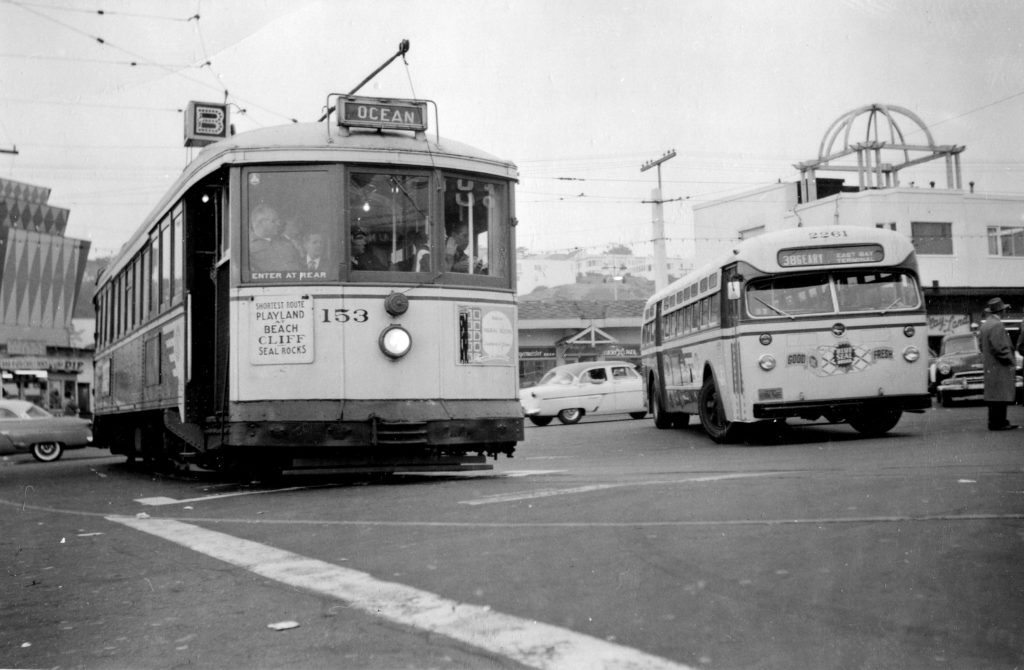
Finally, voters repealed the requirement for two crewmembers on modern streetcars in 1954, and within four years, only ‘PCC’ streamliners, the type seen on the E- and F-lines today, remained in regular service. Five streetcar lines, the J, K, L, M, and N, were saved, mostly because they used tunnels or rights-of-way difficult or too expensive to convert to bus use, but the busiest streetcar line, the B-Geary, which had no such protection, fell at the end of 1956, becoming the 38, still Muni’s busiest line overall.
Stable state
Most of the big change to buses was completed by 1952, except for Geary, which got buses in 1956. San Francisco’s mix of buses and streetcars stayed pretty steady for the next four decades.
Several generations of motor coaches and trolley coaches have carried San Franciscans since then. Macks dominated the motor coach fleet from 1956-1969, followed by GMC ‘New Look’ coaches (which Muni was the last major property to buy new, in 1969). The ‘Fishbowls,’ as the GMCs were called, were augmented by smaller AM General buses (nicknamed ‘Gremlins’ after the small American Motors automobile of the area). The first fleet of articulated coaches (or ‘bendy buses,’ as the British call them) were delivered to Muni by MAN in 1984. Since then, most motor coaches have come from Neoplan or Flyer Industries. Flyer supplied a new generation of trolley coaches in 1975, replaced by Czech-designed ETI trolley buses starting in 2001. Various other bus manufacturers supplied smaller numbers of coaches over the past 50 years; these fleet details are beyond the scope of this story.
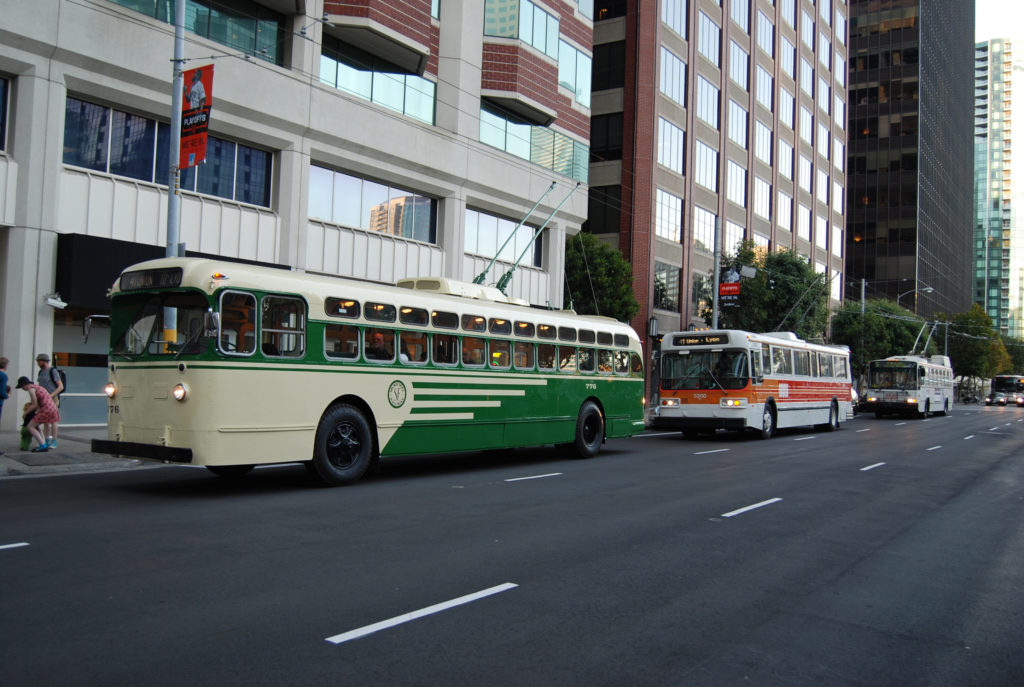
Rapid Transit came to San Francisco in 1973 with the opening of the BART Transbay Tube. By 1982, Muni’s five surviving streetcar lines moved into the Muni Metro subway under Market Street, and after successful summer demonstrations in the 1980s, vintage streetcars returned to the surface of Market permanently in 1995. In fact, the F-line and later the E-line run routes once served by buses: the 8-Market trolley bus on Market and the 32-Embarcadero along the waterfront. Then, in 2005, modern streetcars (called ‘light rail vehicles’ by some) replaced buses on one of San Francisco’s longest thoroughfares, Third Street, 66 years after buses replaced streetcars.
Today, Muni is midway through a multi-year process of replacing its rubber-tire fleet with a standard design, manufactured by New Flyer Industries. Both the hybrid motor coaches and trolley coaches share the same sleek body design, the first time that’s been true across the Muni rubber tire fleet. Both types of bus are being delivered in 40-foot (standard) and 60-foot (articulated) lengths.
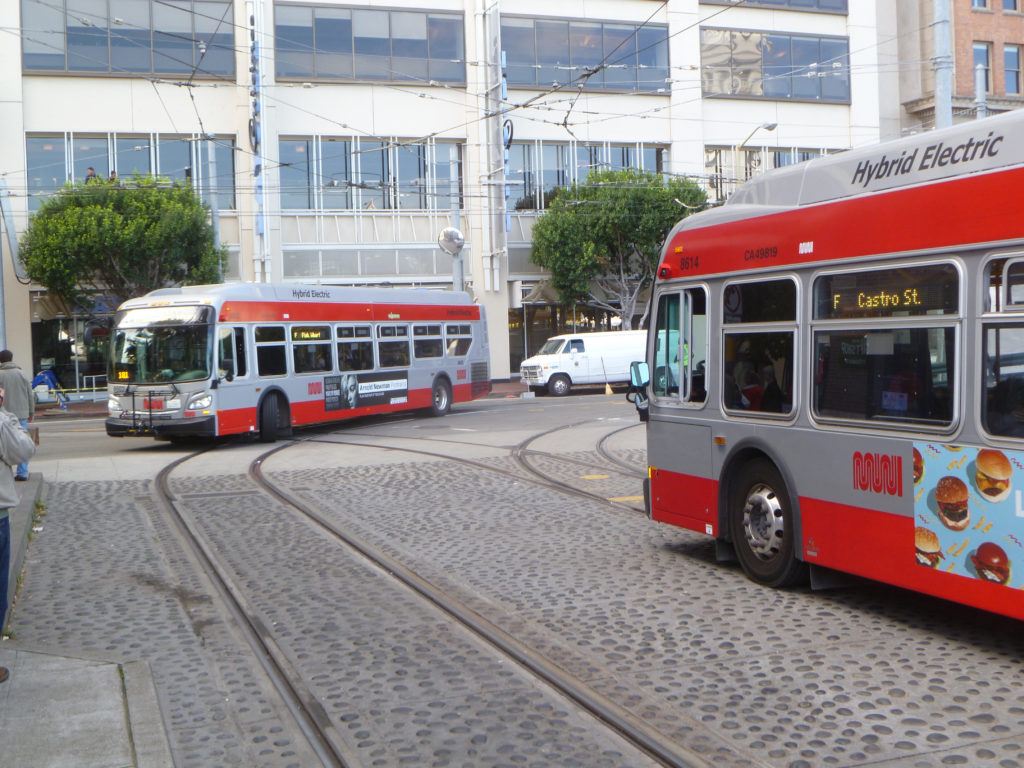
It all adds up to one of the lowest emission transit fleets in North America, including 200 zero-emission streetcars/light rail vehicles (both modern and vintage), plus more than 400 zero-emission electric trolley buses, in addition to hundreds of hybrid diesel-electric motor buses.
Both buses and streetcars are essential to moving both residents and visitors around San Francisco, and along with the world-famous cable cars, provide the pulse along the arteries of the City by the Bay.
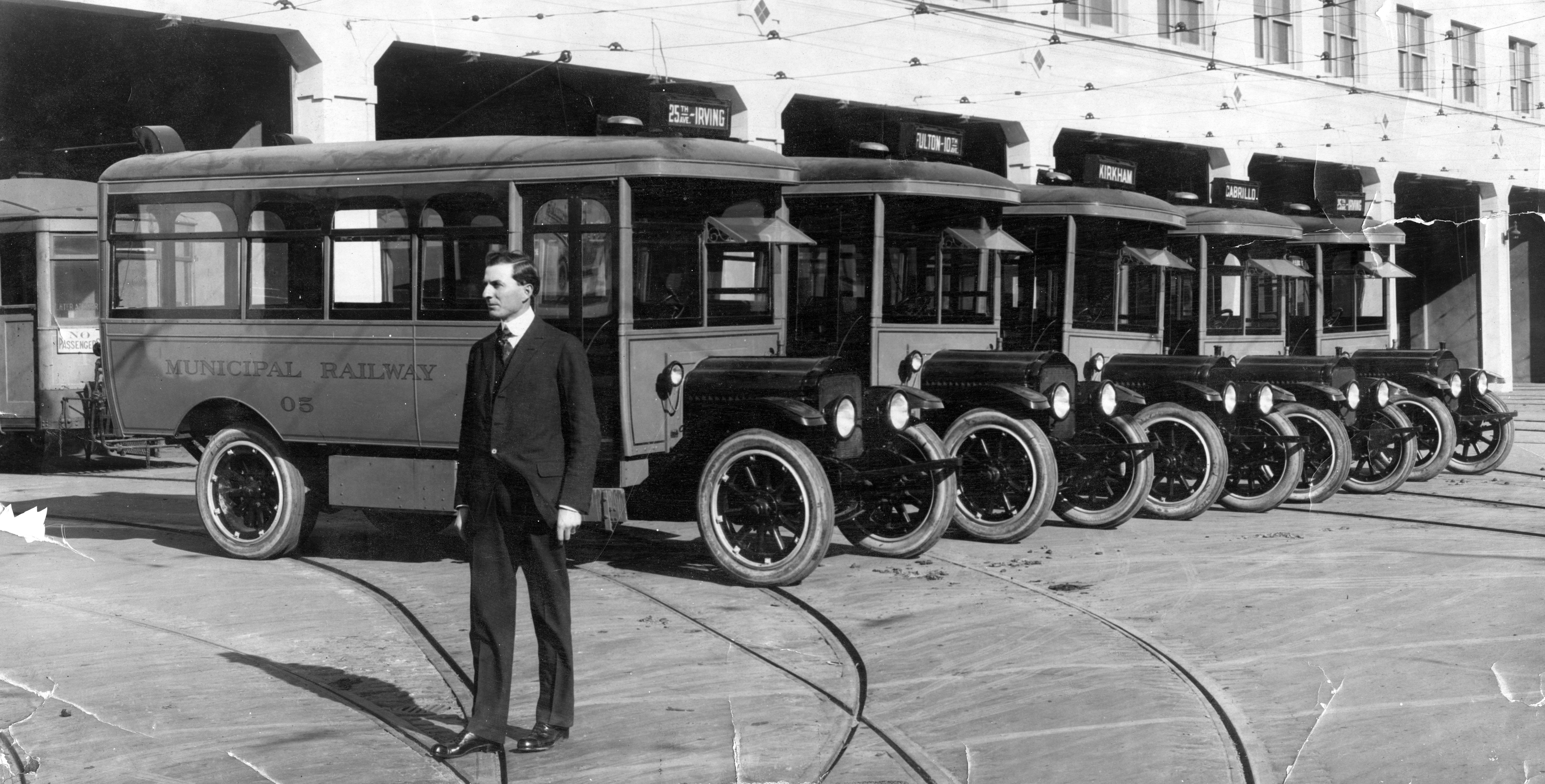
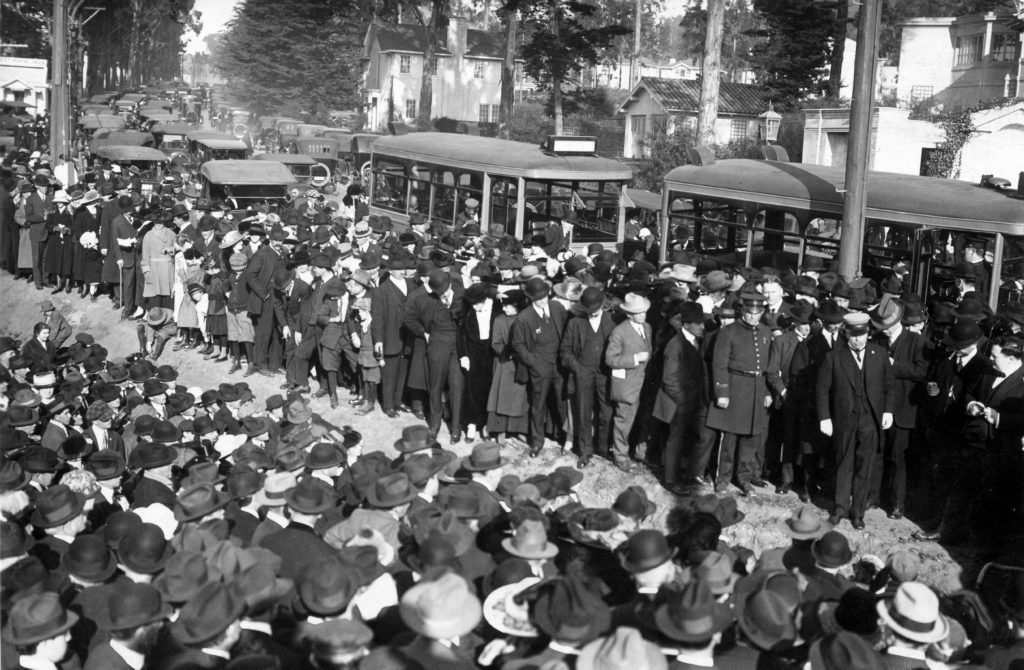
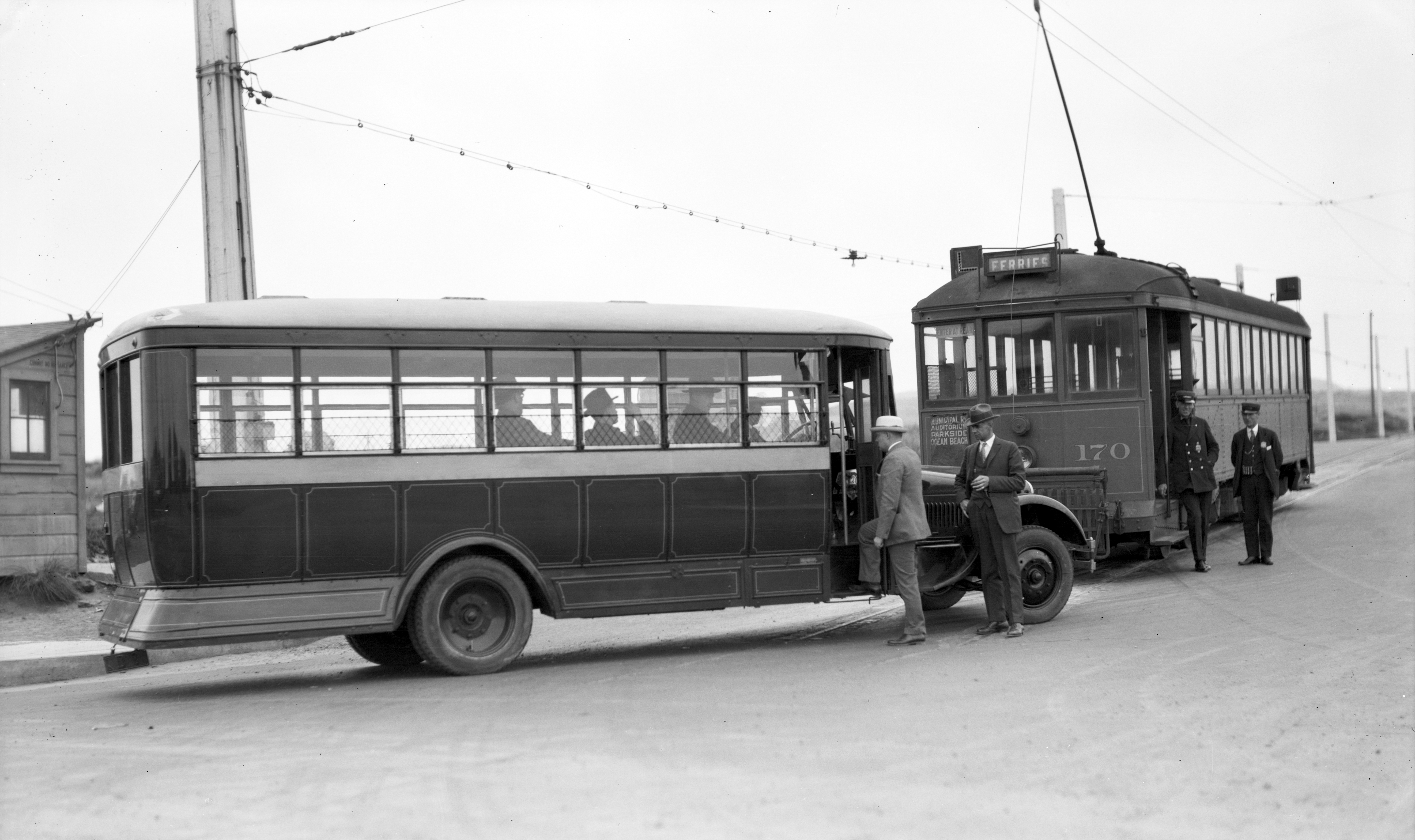
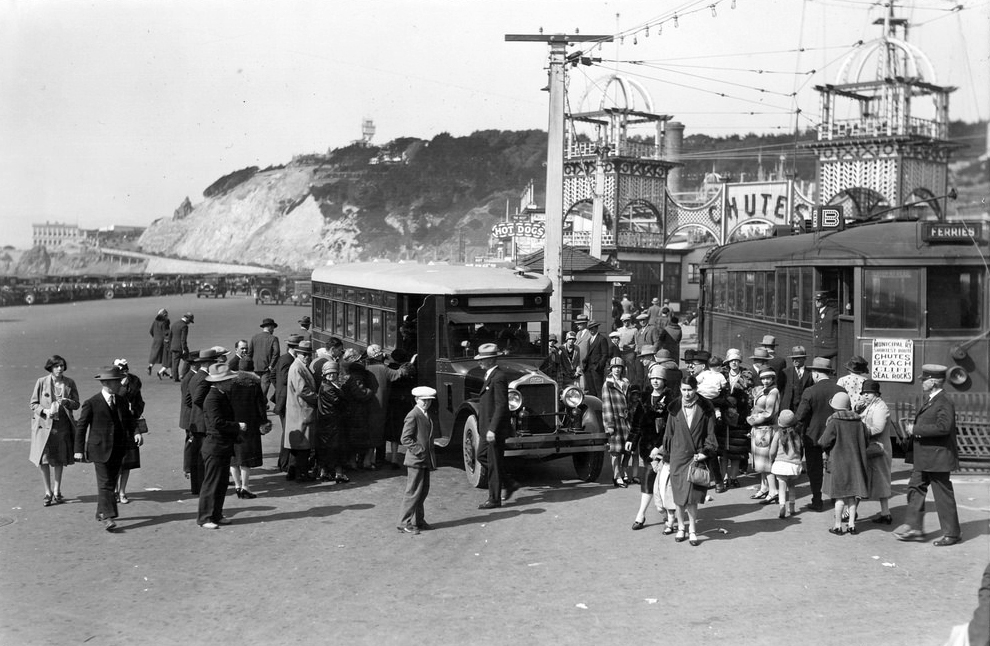
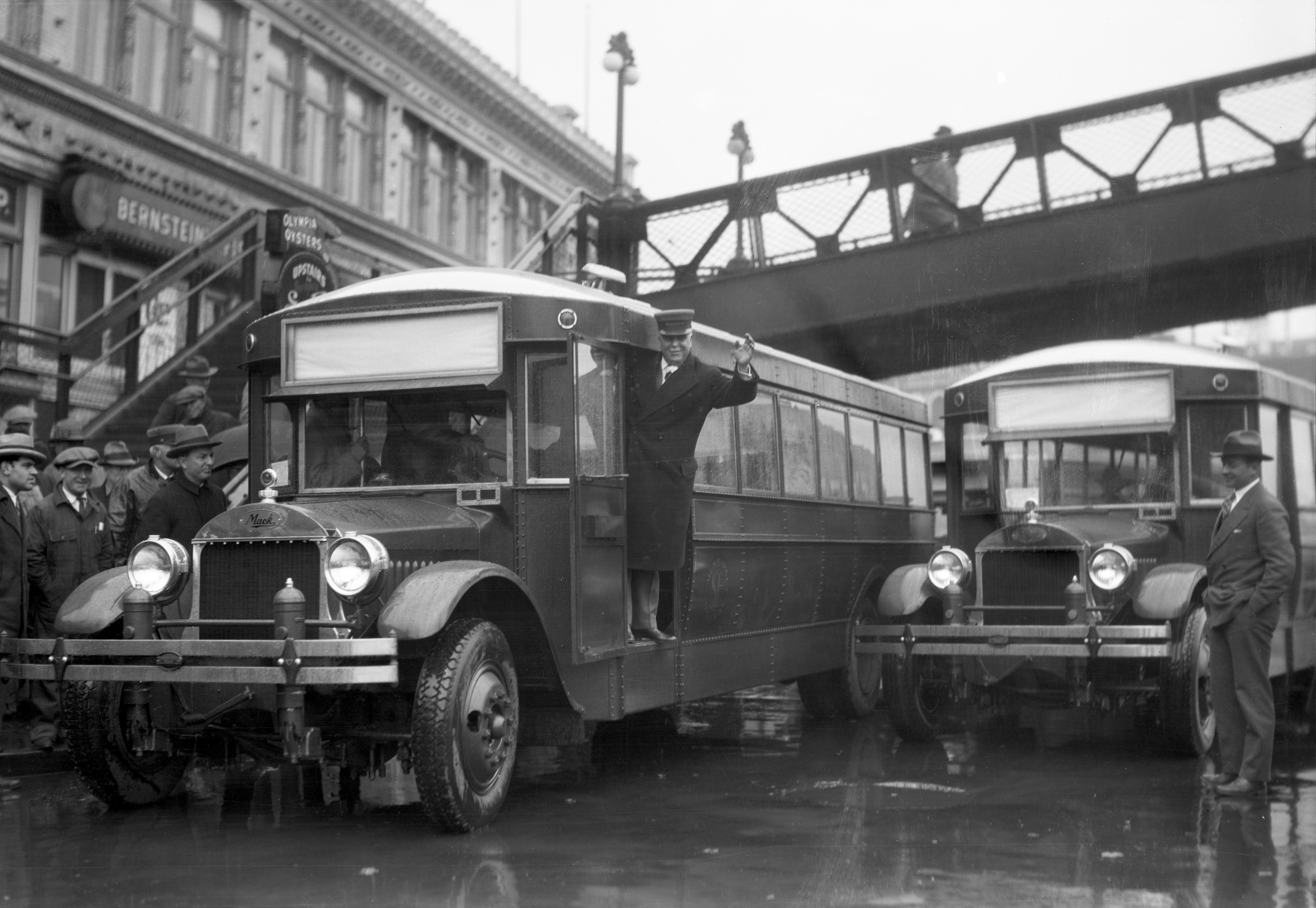
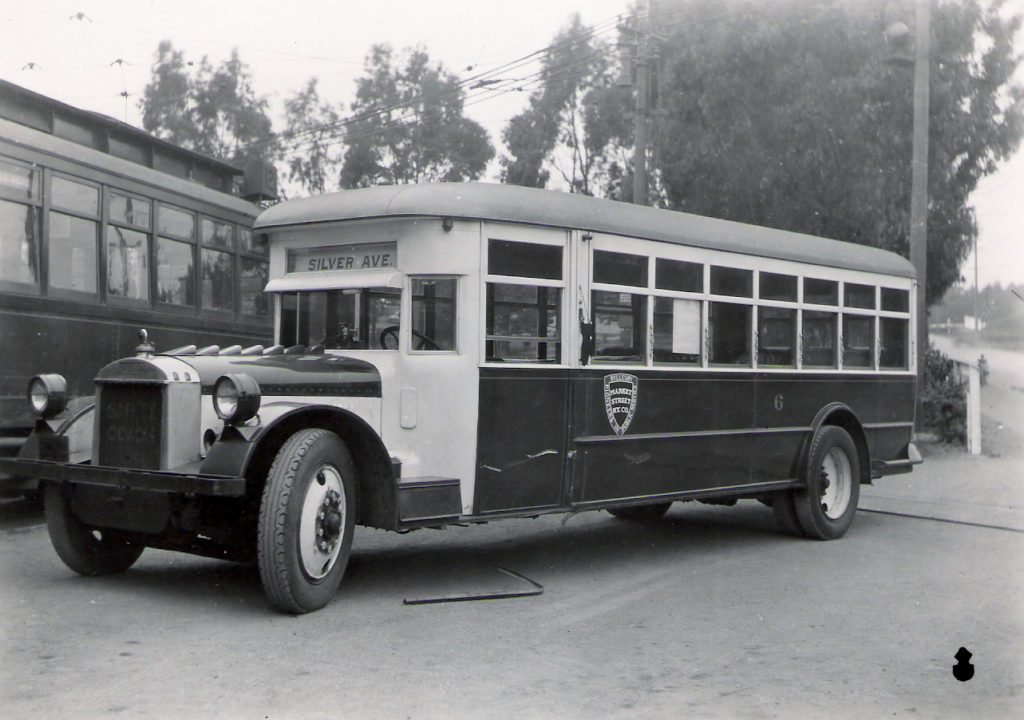
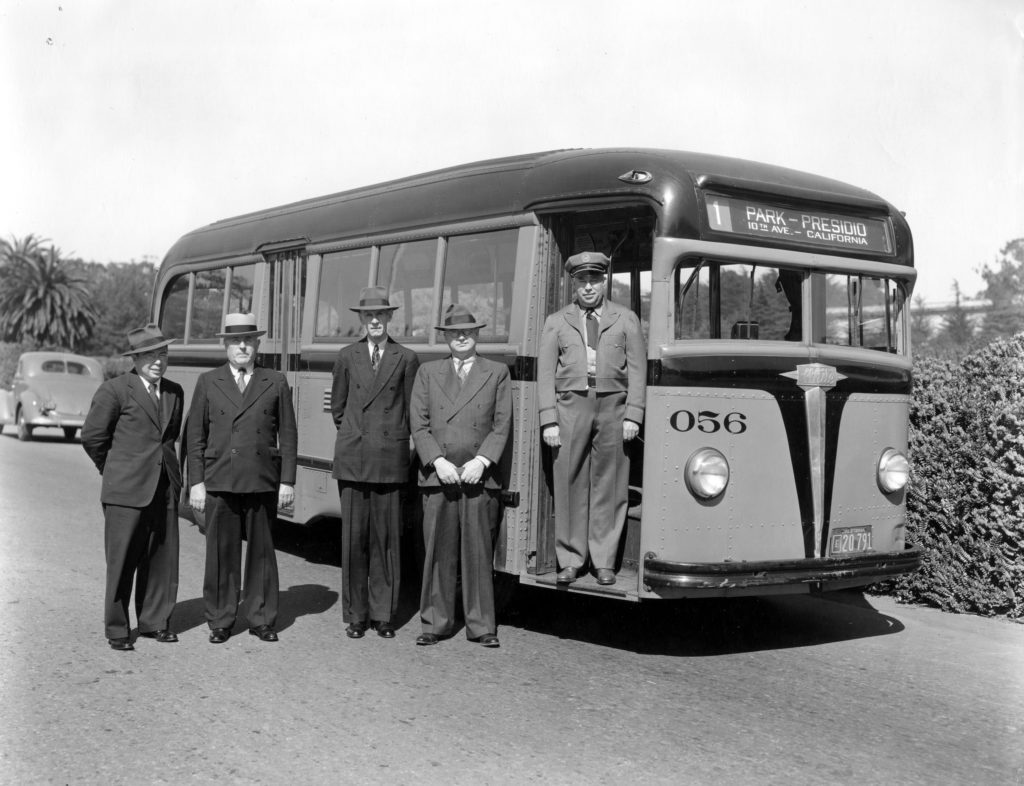
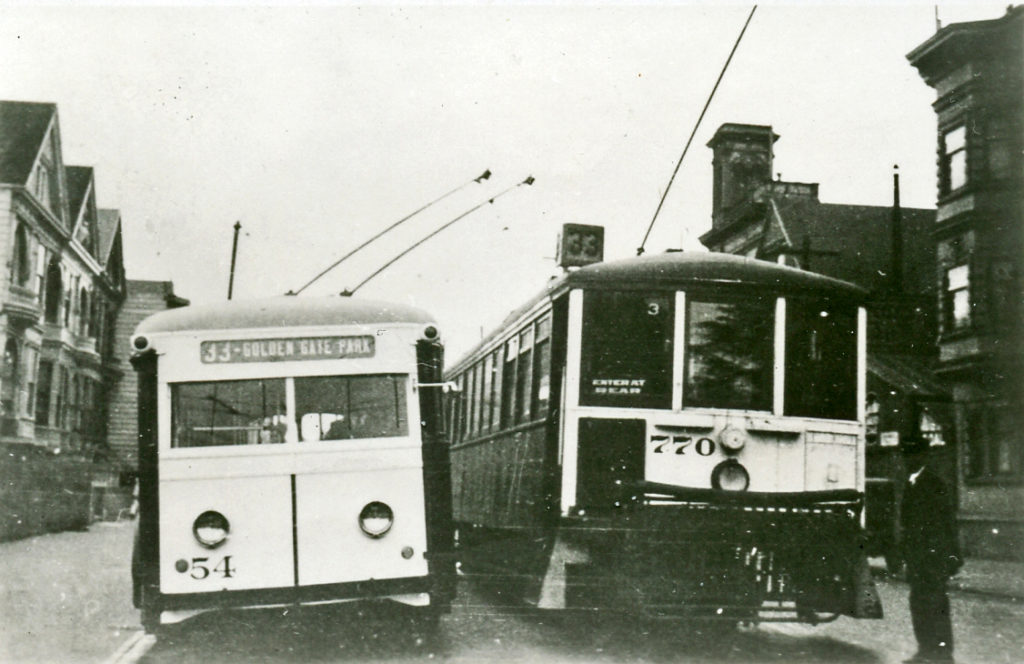
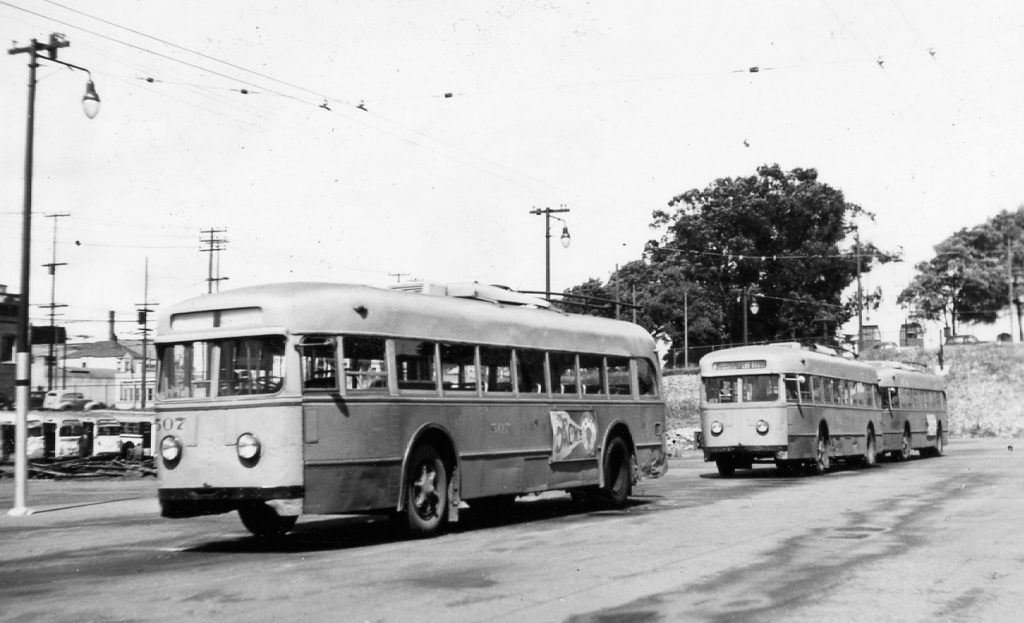
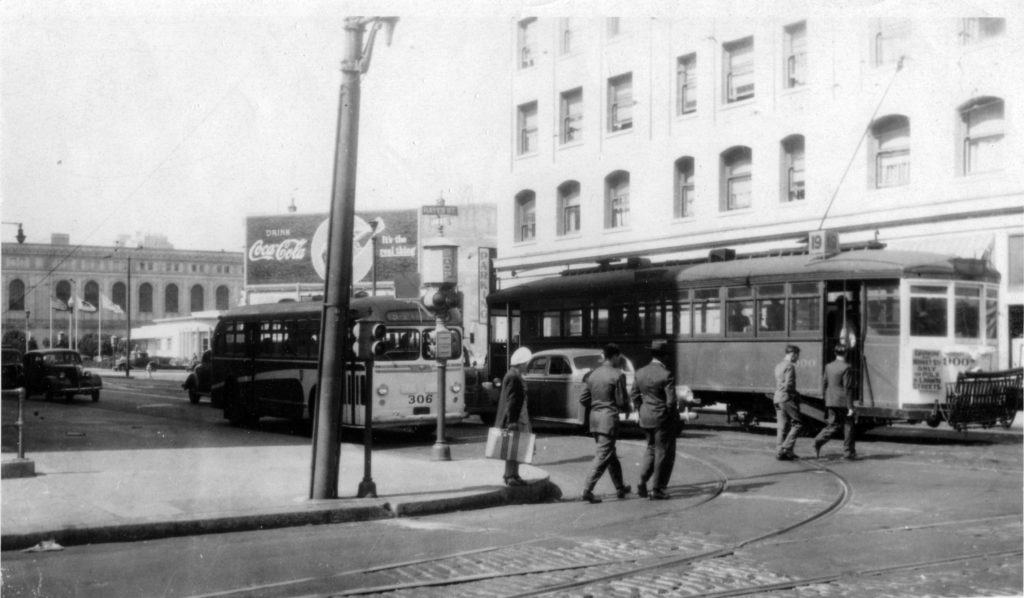
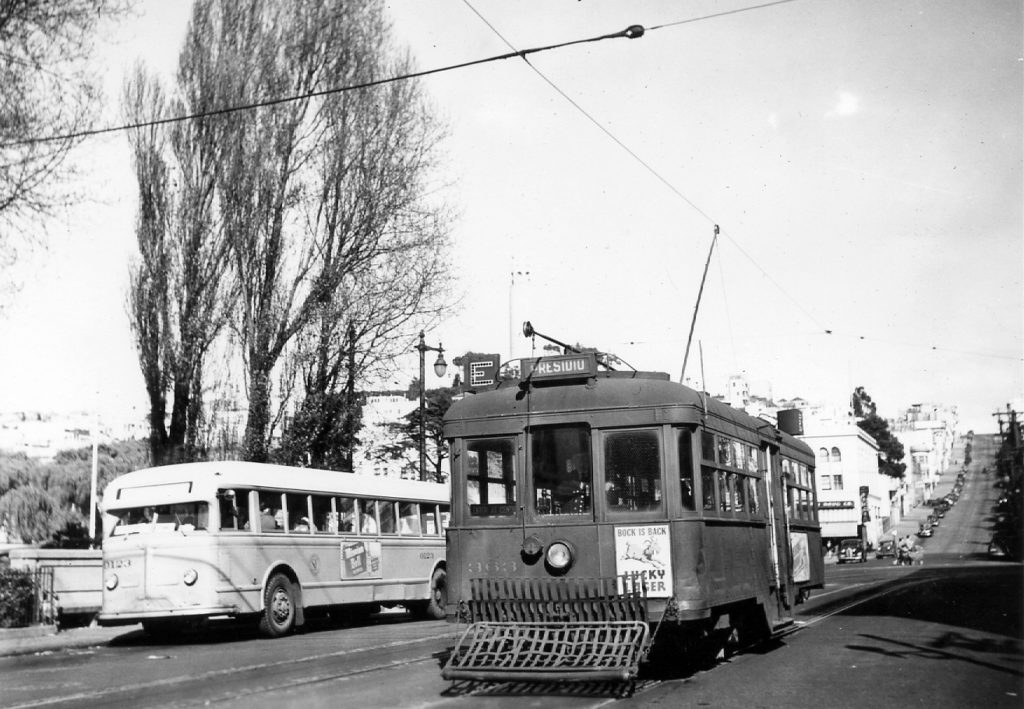
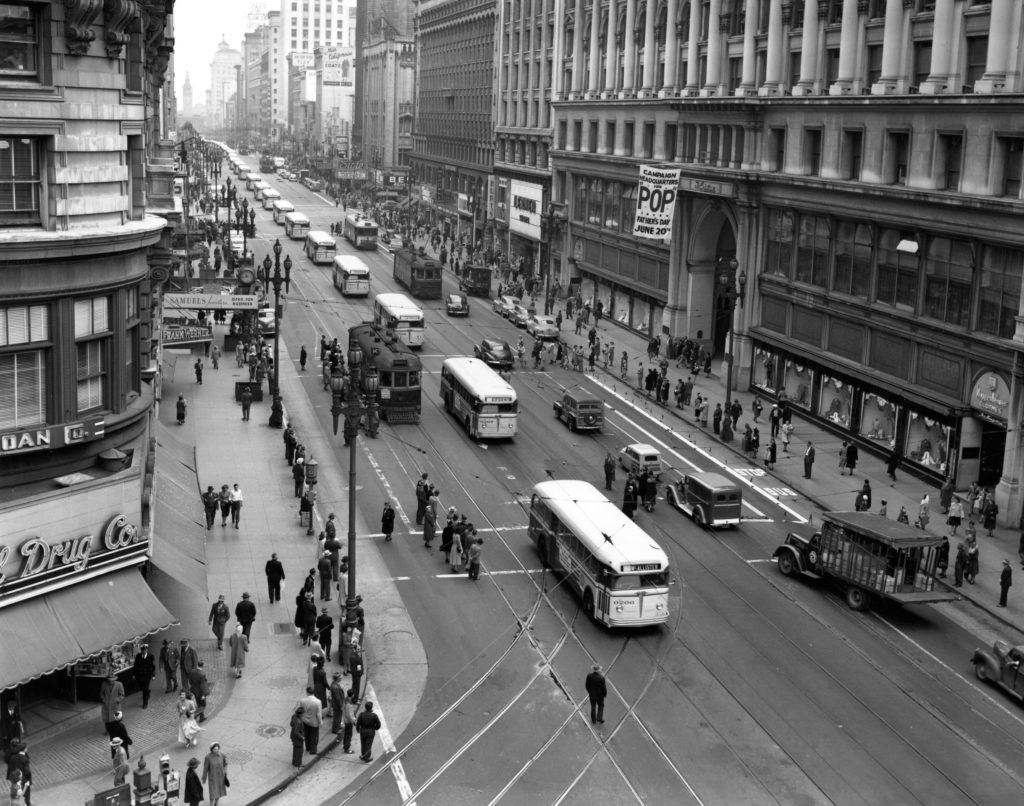
The 15 is back I had the pleasure as the JLMB rep of the union and MTA to plan the route but it’s nothing like the great old 15 line that carried up to 32,000 a day and the present T line doesn’t come close, those were great days.